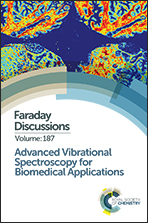Raman spectroscopy for cytopathology of exfoliated cervical cells
Abstract
Cervical cancer is the fourth most common cancer affecting women worldwide but mortality can be decreased by early detection of pre-malignant lesions. The Pap smear test is the most commonly used method in cervical cancer screening programmes. Although specificity is high for this test, it is widely acknowledged that sensitivity can be poor mainly due to the subjective nature of the test. There is a need for new objective tests for the early detection of pre-malignant cervical lesions. Over the past two decades, Raman spectroscopy has emerged as a promising new technology for cancer screening and diagnosis. The aim of this study was to evaluate the potential of Raman spectroscopy for cervical cancer screening using both Cervical Intraepithelial Neoplasia (CIN) and Squamous Intraepithelial Lesion (SIL) classification terminology. ThinPrep® Pap samples were recruited from a cervical screening population. Raman spectra were recorded from single cell nuclei and subjected to multivariate statistical analysis. Normal and abnormal ThinPrep® samples were discriminated based on the biochemical fingerprint of the cells using Principal Component Analysis (PCA). Principal Component Analysis – Linear Discriminant Analysis (PCA-LDA) was employed to build classification models based on either CIN or SIL terminology. This study has shown that Raman spectroscopy can be successfully applied to the study of routine cervical cytology samples from a cervical screening programme and that the use of CIN terminology resulted in improved sensitivity for high grade cases.
- This article is part of the themed collection: Advanced Vibrational Spectroscopy for Biomedical Applications


 Please wait while we load your content...
Please wait while we load your content...